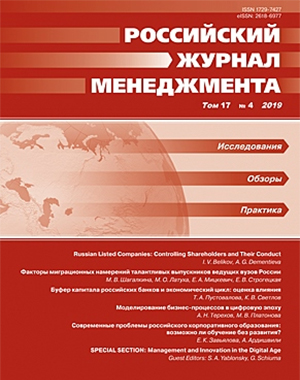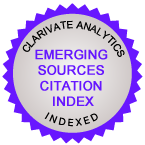Capital Buffer of Russian Banks and Economic Cycle: Assessment of Influence
DOI:
https://doi.org/10.21638/spbu18.2019.403Abstract
The article considers the relationship between the capital buffer and the stages of the economic cycle. The relevance of this research is determined by the fact that, according to the Basel III standards, the Central Bank of Russia has introduced the additional component of the capital adequacy standard, the countercyclical buffer. The countercyclical buffer is aimed at creating a special reserve, which is created during periods of economic growth and used to support bank’s activities during recessions. The paper analyzes determinants of the capital buffer by constructing a panel regression based on the System GMM method using data from 48 Russian banks. The main result of the study was the confirmation of an inverse relationship between the size of the capital buffer and GDP growth rate for large and medium domestic banks. Besides, we consider the impact on the capital buffer size of such indicators as ROE, the share of nonperforming loans in a bank’s portfolio and the size of a loan portfolio itself.
Keywords:
capital adequacy, capital buffer, Basel III, economic cycle, countercyclical capital buffer
Downloads
References
REFERENCES IN LATIN ALPHABET
Translation of references in Russian into English
Downloads
Published
How to Cite
Issue
Section
License
Articles of the Russian Management Journal are open access distributed under the terms of the License Agreement with Saint Petersburg State University, which permits to the authors unrestricted distribution and self-archiving free of charge.





